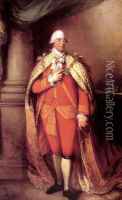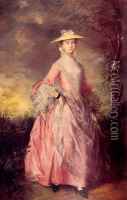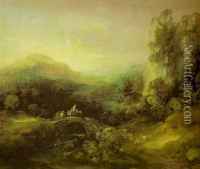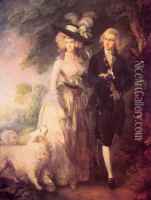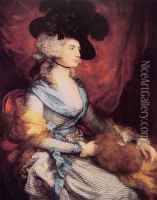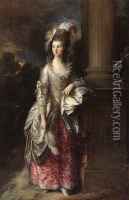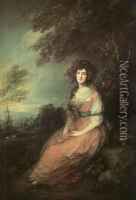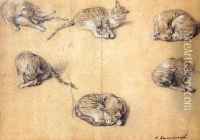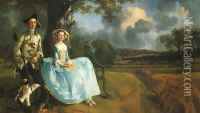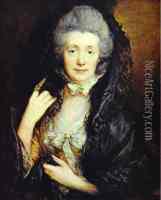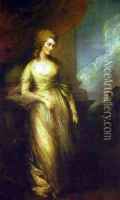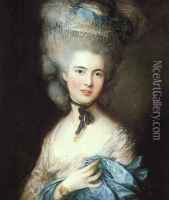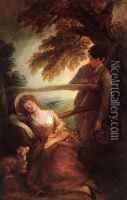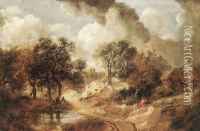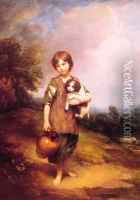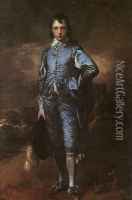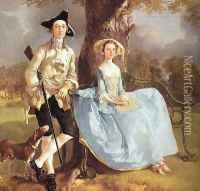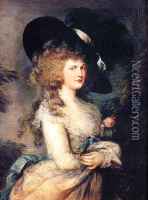Thomas Gainsborough Paintings
Thomas Gainsborough was an English portrait and landscape painter, draughtsman, and printmaker. Born in Sudbury, Suffolk, England, on 14 May 1727, he quickly displayed a natural talent for drawing and painting, which led to an apprenticeship in London in his early teens. In London, he studied under engraver Hubert Gravelot but also spent time with French painter Francis Hayman and William Hogarth.
Gainsborough's early works consisted of landscapes and portraits for local patrons in Suffolk and Ipswich. In 1759, he moved to Bath, where he developed a large clientele among the wealthy and the nobility due to his sophisticated and elegant portraits. His style had a great lightness and charm, and he became known for the way he depicted the fabrics and costumes of his subjects.
In 1768, Gainsborough became a founding member of the Royal Academy but often had conflicts with its rigid structure and rules. Despite these conflicts, he achieved great success and was a favorite of King George III and his family, receiving numerous royal commissions.
Throughout his career, Gainsborough maintained a strong interest in landscapes. He preferred painting landscapes to portraits, considering it a more genuine form of art, free from the constraints of patron demands. His landscapes are characterized by a poetic and often idyllic representation of nature, drawing influence from Dutch landscape artists of the 17th century.
Gainsborough's technique was innovative for his time. He often used his fingers and a palette knife to apply paint, achieving soft and delicate effects. His portraits are particularly noted for the elegance and grace of the sitters, and his landscapes for their serene beauty.
Thomas Gainsborough died on 2 August 1788 in London, leaving behind a legacy as one of the most important British artists of the second half of the 18th century. His works have had a lasting impact on the development of English portrait and landscape painting.
